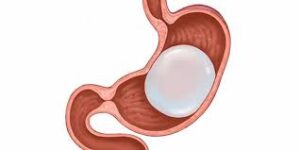
Endoscopic Intragastric treatments have become a prominent solution for individuals seeking effective weight loss methods. This innovative procedure offers a less invasive alternative to traditional bariatric surgeries, making it an attractive option for those looking to improve their health and achieve sustainable weight loss. In this comprehensive guide, we’ll explore the ins and outs of Endoscopic Intragastric treatments, their benefits, and what you can expect from the procedure.
Understanding Endoscopic Intragastric Treatment
What is Endoscopic Intragastric Treatment?
Endoscopic Intragastric treatment is a minimally invasive procedure designed to assist with weight loss. It involves the use of an endoscope—a thin, flexible tube with a camera and light—inserted through the mouth and into the stomach. This allows healthcare professionals to place an intragastric balloon inside the stomach, which helps to reduce hunger and promote early satiety, leading to weight loss.
How Does it Work?
The Endoscopic Intragastric balloon fills a portion of the stomach, which limits the amount of food that can be consumed at one time. The balloon is inflated with a sterile solution and remains in the stomach for a predetermined period, typically six months. During this time, patients are encouraged to adopt healthier eating habits and lifestyle changes, which contribute to significant weight loss.
Benefits of Endoscopic Intragastric Treatment
Minimally Invasive Procedure
One of the major advantages of Endoscopic Intragastric treatment is its minimally invasive nature. Unlike traditional weight loss surgeries, this procedure does not require any incisions. The balloon is inserted through the mouth, which means no stitches or lengthy recovery times are needed. This results in a quicker return to daily activities and less risk of complications.
Effective Weight Loss
The Endoscopic Intragastric balloon has been shown to be effective in helping individuals lose weight. By taking up space in the stomach, it helps control portion sizes and reduces overall calorie intake. Studies have demonstrated that patients can achieve significant weight loss and improve their overall health, including reductions in body mass index (BMI) and improvements in related conditions such as diabetes and hypertension.
Short Recovery Time
Recovery from Endoscopic Intragastric treatment is relatively quick compared to other weight loss procedures. Most patients can resume their normal activities within a few days of the procedure. There is no need for extended hospital stays or lengthy downtime, making it a convenient option for those with busy schedules.
What to Expect Before the Procedure
Pre-Procedure Assessment
Before undergoing Endoscopic Intragastric treatment, patients will need to undergo a comprehensive assessment. This typically includes a review of their medical history, a physical examination, and possibly additional tests to ensure they are suitable candidates for the procedure. This step is crucial for identifying any potential risk factors and ensuring that the treatment plan is tailored to the individual’s needs.
Preparing for the Procedure
Patients will be given specific instructions on how to prepare for the Endoscopic Intragastric procedure. This may include dietary adjustments, such as following a clear liquid diet or avoiding certain foods in the days leading up to the procedure. It is important to follow these guidelines carefully to ensure the procedure goes smoothly.
During the Procedure
The Procedure Itself
The Endoscopic Intragastric procedure is typically performed on an outpatient basis, meaning patients can go home the same day. During the procedure, patients are usually sedated to ensure comfort. The endoscope is inserted through the mouth and into the stomach, where the balloon is placed and inflated. The entire process usually takes less than an hour.
Post-Procedure Care
After the procedure, patients may experience some mild discomfort, such as nausea or bloating, which usually resolves within a few days. It is important to follow the post-procedure care instructions, which may include a modified diet and regular follow-up appointments to monitor progress and address any concerns.
Lifestyle Changes for Success
Adopting a Healthy Diet
For the Endoscopic Intragastric treatment to be successful, patients need to make significant lifestyle changes, particularly in their diet. A balanced, nutrient-rich diet that includes plenty of fruits, vegetables, lean proteins, and whole grains will help support weight loss and overall health. Portion control and mindful eating are also crucial.
Incorporating Regular Exercise
Regular physical activity is an essential component of any weight loss plan. Patients should aim to incorporate both cardiovascular exercises and strength training into their routine. Exercise not only helps with weight loss but also improves overall fitness and well-being.
Ongoing Support and Monitoring
Maintaining weight loss and achieving long-term success with Endoscopic Intragastric treatment requires ongoing support and monitoring. Regular follow-up appointments with a healthcare professional are important to track progress, make any necessary adjustments to the treatment plan, and address any issues that may arise.
Potential Risks and Considerations
Possible Side Effects
While Endoscopic Intragastric treatment is generally safe, there are potential side effects to be aware of. These may include nausea, vomiting, or abdominal pain. In rare cases, more serious complications such as balloon deflation or gastrointestinal issues may occur. It is important to discuss these risks with a healthcare provider and weigh them against the benefits.
Long-Term Considerations
The Endoscopic Intragastric balloon is typically used as a temporary weight loss aid. After six months, the balloon is removed, and patients are expected to maintain their weight loss through continued lifestyle changes. Long-term success depends on the ability to adopt and sustain healthy eating and exercise habits.
Conclusion
Endoscopic Intragastric treatment offers a promising and minimally invasive option for individuals seeking to lose weight and improve their health. By understanding the procedure, its benefits, and what to expect, you can make an informed decision about whether it is the right choice for you. With the right preparation, lifestyle changes, and ongoing support, you can achieve your weight loss goals and pave the way for a healthier future.